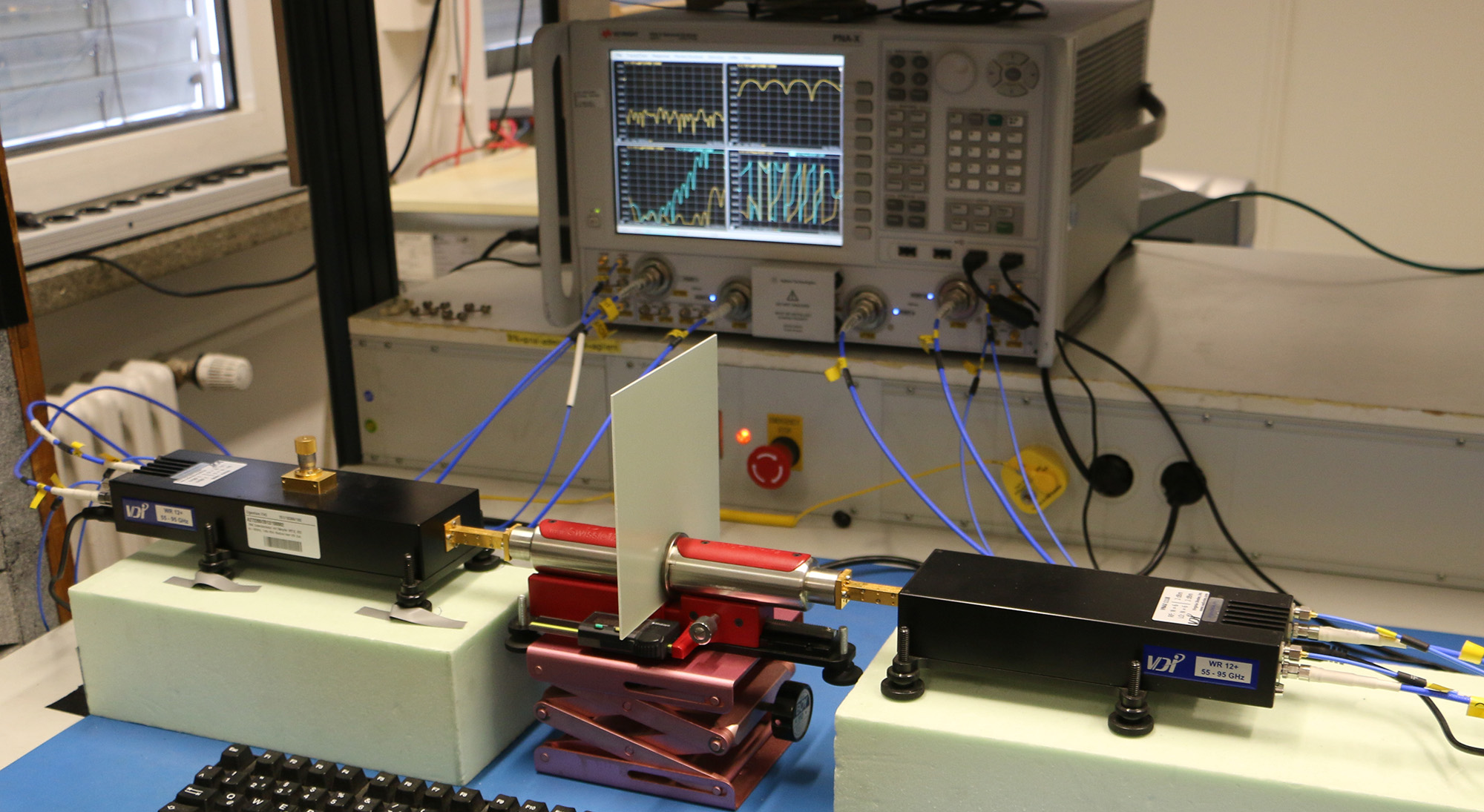Precise material characterization
Vehicles come with numerous in-built sensors that scan the environment and provide valuable data for driving assistance. It is therefore important for vehicle manufacturers to know how the vehicle's parts change the electromagnetic signals that the sensors emit and receive. Fraunhofer FHR carries out such analyses precisely and, in addition to the results, is now calculating information on the measurement accuracy for the first time.

Without a driver, the vehicle meanders through the streets while the occupants stick their noses in books or look at their smartphones – at least that is the long-term vision of autonomous driving. It is essential that the cars are able to recognize their surroundings at all times and correctly assess dangers. This is the task of driver assistance systems, which are being installed in vehicles more and more often. The environment recognition is based on numerous different sensors: Integrated into the car, they detect obstacles on the road and pass on their data to the vehicle control system, which can, for example, initiate a braking maneuver in the event of imminent danger. Radar sensors use electromagnetic waves to perceive their environment. These waves have to propagate not only through the air until they hit a potential obstacle, but also through the car parts behind which the radar is installed. Manufacturers therefore want to know for example: How do the vehicle materials, including the various layers of paint, affect the electromagnetic waves? What is the effect of the various painting processes?
Analyses...
Fraunhofer FHR is carrying out corresponding investigations for numerous customers. The measuring equipment can be used to professionally measure and characterize various material types – even those consisting of several different homogeneous layers. Two electromagnetic parameters are determined for this purpose. One parameter is the dielectric constant, which is an indication of how the material interacts with the electric field of the wave. The second is the loss factor, which describes the attenuation experienced by the wave when it interacts with the material.
...with measurement inaccuracies and standard deviations
Plus, a new point: In the future, besides the measurement results they received before, customers will also receive an indication of the measurement inaccuracies – more precisely, the distribution of the measurement results as well as the standard deviation. This means that they will be able to accurately assess the measurement inaccuracy that is occurring, and the results will be even more concrete and meaningful for them than they were before. They will even be able to combine the different measurements from several laboratories to get the best possible estimate of the parameters of a material and their measurement uncertainties. In addition, Fraunhofer FHR has identified elements in the measurement setup that can be used to further optimize the measurement accuracy in a further step.